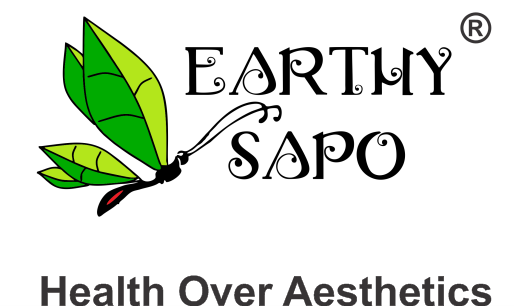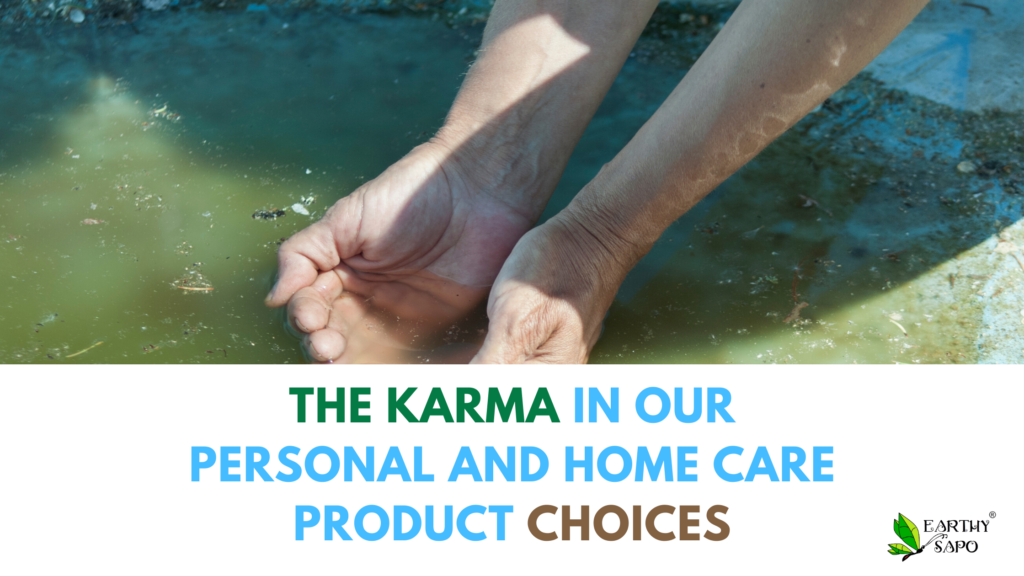Health & Wellness, Home Care
THE KARMA IN OUR PERSONAL AND HOME CARE PRODUCT CHOICES
Life is all about the choices we make and I believe that holds true even for the products we use . Right from the tooth paste we use in the morning to the cleaning products we use to keep germs at bay,these choices impact not just our health but that of the environment too. It is important that we familiarize ourselves with how, knowingly or unknowingly, the choices we make have an impact not just on our health but that of the entire eco-system too .
Many of you would wonder how can personal care products or detergents impact the environment? After all, once the toothpaste, or soap or shampoo or detergent gets rinsed off, it goes into the drain, which in turn is treated in the waste water treatment plants (WWTP) to avoid any harm to the environment. So, how is the environment getting adversely impacted?
WWTP are designed to remove contaminants from the household & also industrial waste water that flows into it before being released into the environment. A by-product of sewage treatment is a semi-solid waste or slurry, called sewage sludge. The sludge has to undergo further treatment before being suitable for disposal or application to land. While our WWTPs are well designed for removing most of the chemicals that flow into it through water, as majority are biodegradable, a number of household chemicals are difficult to remove and end up being discharged into the waterways and environment. Advancement in waste water treatment may reduce some types of pollution, but new chemicals are being introduced continuously and their widespread use only aggravates the problem. Once these chemicals find their way into ground water, rivers and streams, they adversely impact the entire eco-system – humans, animals and plants. They contaminate the drinking water; get absorbed into plants and crops through the water used for irrigation and the contaminated sludge added to soil as fertilizers; gets consumed by animals and fishes and eventually finds a way into humans. Further, these contaminants can also alter the chemical composition of water that includes electrical conductivity, temperature and acidity.
So, in a nutshell, yes our actions and choices have a more far reaching impact than we would like to believe!The Law of Karma holds good here too!
Let’s take a look at how the environment, especially water, is getting contaminated by thechemicals in our personal care products and detergents. The list comprises some of the most common chemicals and is not complete or exhaustive. It is also assuming that all the waste water is flowing into drains and not directly into the river streams.
a) Synthetic Surfactants: Surfactants, also known as surface active agents, gives a product the ability to remove dirt from surfaces such as human skin, textiles, and other solids. While the plant based surfactants are biodegradable, synthetic surfactants are a cause of concern. There are various classes of synthetic surfactants which have different applications across a spectrum of products. However, their toxicity, extent of their degradability, by-products released during degradation and the efficacy of their treatment in the WWTP are issues of concern.Traces of those classes of surfactants which basically were considered largely degradable have been found in ground water, rivers and streams, raising concerns on their widespread and indiscriminate usage and also on the efficacy of our WWTPs to treat them or handle such large quantities. These when released into rivers or water bodies are toxic and impact marine life. In some types of surfactants, the breakdown products are more toxic to aquatic organisms than the surfactant themselves! These by-products are known to mimic the effect of the hormone oestrogen and are hormone disruptors.
b) Phosphates: Phosphates are used as ‘builders’ in detergents, with the primary objective of softening the water to increase the efficacy of the surfactants. Phosphates are non-toxic, increase the efficacy of the detergent and with them the cost of the final product is also low. However, phosphates are largely responsible for problems to the environment. They cause eutrophication of water. Eutrophication is when a body of water becomes overly enriched with minerals and nutrients which induce excessive growth of algae. This process may result in oxygen depletion of the water body. This in turn kills fish and a range of other effects reducing biodiversity. Phosphates are also responsible for the formation of white foam which act as a barrier to entry of oxygen and light in the water. Water also becomes improper for consumption and future use by animals, plants and man. Many species are affected, as a cycle.Due to the environmental issues associated with phosphates, several countries like USA, Canada, Germany, Sweden etc have either banned or restricted the use of phosphates in detergents. However, there are no such similar regulations in India yet.
c) Phthalates : Phthalates is a chemical that has wide application in plastics, toys, cosmetics, personal care products, detergents and also food. In cosmetics and personal care products and detergents, phthalates is used as a plasticizer or for flexibility (like in nail polishes and hair sprays) and as fixatives in fragrances. Essentially, wherever there is a fragrance in a product, it most likely also includes phthalates. Endocrine disruption, reproductive toxicity, cancer are among some of the side effects of phthalates. Due to these health risks, some forms of phthalates havebeen banned in some countries like EU. Phthalates are applied in the production of many objects of daily use, and their presence has been detected in air, drinking water, rivers, sewage sludge, bottom deposits and soil. As, phthalates are not chemically bound to the products, they reach the environment through leaching, evaporation, migration and oxidation during product use and storage. Large amounts of phthalates have been reported both in effluents reaching wastewater treatment plants and in the treated water leaving the plant. They are transmitted to the soil environment when contaminated sludge is used as agricultural fertilizer. It is believed that it is responsible for the steady decrease in the number of reptilian species around the world. Even at very small concentrations it impairs the development internal reproductive organs in animals.
d) Triclosan: Triclosan (TCS) is a broad spectrum antibacterial agent present as an active ingredient in some personal care products such as soaps, hand washes, toothpastes, disinfectants and sterilizers. It is an endocrine disrupting compound and its increasing presence in water resources and toxicity in aquatic organisms are a cause for concern to human and environmental health. Traces of TCS have been found in ground water, rivers and streams. These streams often serve as the water source for crops. Increased and widespread use of TCS is also linked to necessary antibiotics becoming less effective (bacterial resistance).
Water pollution by household chemicals is a function of several parameters like degradability of the chemicals used, indiscriminate and widespread use of the chemicals, by-products of the degrading process, effectiveness of the WWTPs in degrading the chemicals, the capacity of the WWTPs to handle quantum of specific chemicals, quality of the water infrastructure, etc.
The existing water infrastructure is already so choked with these chemicals that the effects have become visible with lakes and rivers frothing, changing biodiversity and increasing antibiotic resistance among people. It is going to take quite a while for us to clean up the mess already created. But we can atleast try to avoid creating further trouble by stopping the use of products with these chemicals. Switching to biodegradable and natural personal care products and detergents and also reducing their indiscriminate usage is certainly a step in the right direction.

